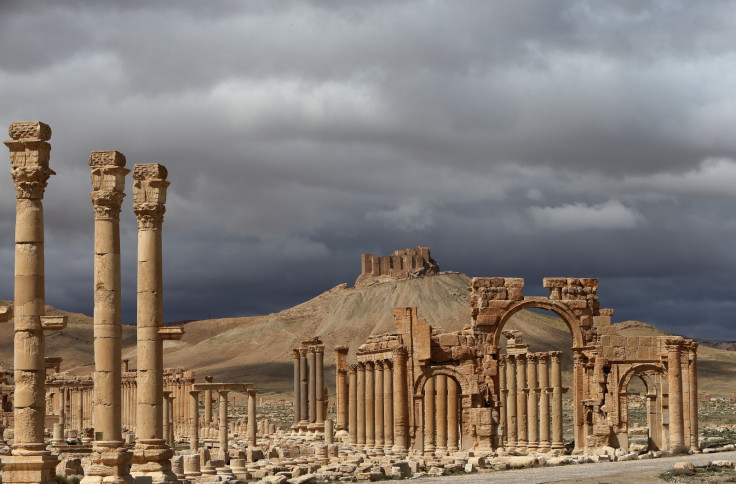Palmyra: Isis fighters within 300m of ancient Syrian wonder of the world as new Kobani feared

Islamic State (Isis) militants have seized key buildings just 300m from the ancient archaeological site of Palmyra after a fierce battle with Syrian government forces.
Small groups of jihadists seized part of the town of Tadmur after fighting exploded near security buildings in northern Palmyra, including the state security branch and the prison.
Damascus-based antiquities director Mamoun Abdulkarim, who is frequently in touch with colleagues in the 2,000-year-old world heritage site, told IBTimes UK lot of clashes were taking place in the middle of the city. "Small groups tried to occupy buildings in the city. The army tried to push back the attack. In the last hour it has been very quiet," Abdulkarim said. "Isis will continue with all force to regain Palmyra.
"These groups are just 300m to 500m from the site and they're trying to enter each area. It's like the battle for Kobani: we appeal the international community to intervene."
The report has been confirmed by the Syrian Observatory for Human Rights (SOHR). "Both sides are firing mortar rounds on each other and regime war planes are shelling the northern parts," the Observatory said.
An activist originally from Palmyra told AFP the city was experiencing water shortages and intermittent electricity. "A large number of people from the city's north have been displaced into other neighbourhoods. Some are sleeping in the streets," he said.
Earlier on 18 May, IS seized two gas fields north of Palmyra.
Artefacts moved from the site
Abdulkarim said a band of "monuments men" have helped move hundreds of artefacts and statues from the site. "They have done an excellent job to move the most precious artefacts and statues out of Palmyra and evacuate them from the site. It's an excellent, impossible operation," he said.
The UN describes Palmyra as a site of "outstanding value". An ancient metropolis and a caravan hub of several civilisations, Palmyra is full of precious sculptures and artefacts. It is renowned for its urbanism – a unique mix of Roman architecture with Greek-Persian and Babylonian influences – admired for its famous colonnaded main street and revered in particular for the temple of Baal, considered one of the most important cultural monuments of the entire region.
Palmyra's destruction would be a catastrophe. Did you see what happened in Nimrud and Hatra?
"Palmyra was at the crossroads between Orient and Occident, a blend between two arts and cultures," Abdulkarim said, calling on the international community to prevent the city's from being destroyed.
"Its destruction would be a catastrophe. Did you see what happened in Nimrud and Hatra?" he said, referring to the Iraqi ancient archaeological sites that were bulldozed or blown-up by IS.
The jihadist group started attacking Palmyra city on 13 May. More than 138 fighters, including 73 soldiers and 65 jihadists, have been killed during fighting. The governor of Homs province said the situation was "under control". Talal Barazi said: "The army has sent reinforcements and it is bombing the (IS) positions from the air."
Palmyra City houses about 35,000 people, including displaced Syrians who escaped violence in their hometowns.
© Copyright IBTimes 2025. All rights reserved.




















